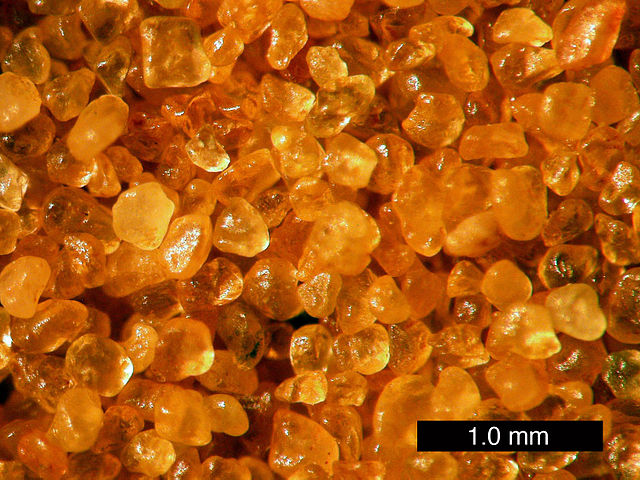Quicksand is a colloid consisting of fine granular material and water. It forms in saturated loose sand when the sand is suddenly agitated. When water in the sand cannot escape, it creates a liquefied soil that loses strength and cannot support weight. Quicksand can form in standing water or in upward flowing water. In the case of upward flowing water, forces oppose the force of gravity and suspend the soil particle.
Quicksand and a warning sign about it at a gravel quarry in England
Quicksand on the Thames
A group of hikers encountering quicksand on the banks of the Paria River, Utah
Quicksand warning sign near Lower King Bridge, Western Australia
Sand is a granular material composed of finely divided mineral particles. Sand has various compositions but is defined by its grain size. Sand grains are smaller than gravel and coarser than silt. Sand can also refer to a textural class of soil or soil type; i.e., a soil containing more than 85 percent sand-sized particles by mass.
Sand dunes in the Idehan Ubari, Libya
Depiction of sands: glass, dune, quartz, volcanic, biogenic coral, pink coral, volcanic, garnet, olivine. Samples are from the Gobi Desert, Estonia, Hawaii and the mainland United States. (1×1 cm each)
Heavy minerals (dark) in a quartz beach sand (Chennai, India)
Sand from Coral Pink Sand Dunes State Park, Utah. These are grains of quartz with a hematite coating providing the orange color.








